When you decide to go independent—whether you’re breaking away from a carrier or have decided to go out on your own—there is one common mistake that’s made: underestimating exactly what needs to be done and how much it’ll cost.
Below are areas that you can either handle yourself or partner with a reputable company to help you:
- Compliance
- Permitting
- Drug Testing
- Lanes and Rates
- Fuel Tax
- Accounting
- Safety
- Service Hours
- Mileage Tax
Service hours, safety, compliance, and drug testing are regulated by the Federal Motor Carrier Safety Administration (FMCSA). Because the FMCSA is a government entity, it can be confusing and stressful to deal with all the paperwork and lengthy forms. Plus, if a form isn’t filled out exactly, you may find yourself spending way more time on paperwork than on the road making money. Consider carefully which areas you’re comfortable handling on your own, and for any that you’re unsure about, pick a trusted company that will handle the rest.
Once you get your operating authority, you WILL be audited by the FMCSA within 12 months. Make sure you have a written plan for keeping hours of service, vehicle maintenance, and your drug and alcohol testing program. The FMCSA wants to ensure every truck on the road is safe, from mechanics to the person behind the wheel.
If you drove for a carrier previously, the carrier handled all the tax filings for its leased owner-operators. However, once you receive your own operating authority and go independent, YOU are responsible for properly reporting income and revenue for federal and state tax purposes, fuel tax, heavy vehicle use tax, and mileage tax.
Also, make sure to research the distinct types of business structures available to you before getting your operating authority. Options like a limited liability company (LLC) or an S Corp may work better for tax reasons. Connect with a certified public accountant (CPA) to fully understand what each business structure means and what it entails.
Remember, you won’t always receive 1099s for the revenue you generate when you make the choice to become an independent owner-operator. Have an accounting system in place to run reports and to track your income and expenses.
Other crucial preparations include developing a system for invoicing, a system for accounts receivables, and making sure to track fuel and mileage taxes. The latter two require filing out the appropriate forms. You need to track all miles and gallons of fuel purchased in each state to properly file your IFTA forms. You also may need to file mileage tax forms in New York, Kentucky, New Mexico, and Oregon if you travel in those states in any given quarter.
What about cash flow?
Common pay schedules mean you may have to wait 30, 60, or even 90 days before getting paid for hauling a load. And if you’re unlucky enough to work with a broker with bad credit, you may never get paid at all for the hard work you already did. Not having reliable and steady cash flow can be extremely damaging when launching your business. Here are some easy ways to make sure you always have the working capital you need:
Factoring
Factoring your invoices gives you the ability to control your cash flow. Companies like TBS Factoring can pay you within hours of delivering a load. Plus, they handle all the collections, so YOU don’t have to worry or wait. Factoring is a great choice for ensuring you have the cash you need for day-to-day operations.
Broker Quick Pay
With all the advancements in technology, more brokers are offering quick pay services with multiple payment options. Mobile systems have also sped up the payment delivery process. However, using this method doesn’t work for every load and is entirely dependent on the broker for that job. You also have to stay on top of collections, regardless if it’s a quick pay or not.
Lines of Credit
The goal is to have enough cash in reserve to operate without borrowing anything. But this can easily take months or years to achieve. An alternative would be to consider a revolving line of credit with your bank. A home equity line of credit is also an option, but keep in mind that if you borrow too much and your business goes belly-up, you could lose your home.
Let's talk insurance
By law, you must have liability insurance. Most freight partners will also require cargo insurance. Experts recommend a $1 million liability policy and a $100,000 cargo policy. Make sure to get your insurance squared away within the first two weeks of your DOT number being filed to avoid delays in your authority processing—or having it dismissed.
HOW DO I FIND CUSTOMERS?
Finding and securing freight directly from a shipper results in the highest net income because there is no middleman to take a cut. Search for local business directories online, join your local chamber of commerce, try to attend local business functions, and get familiar with online load boards. Networking is always a good business decision. You could also drive around industrial parks in your area and notate any possible options.
Don’t be discouraged hearing no several times. Even generating one customer is a great start and should be considered a win.
To set yourself apart when vying for a freight contract, make sure you can answer this question: Why you? Why your trucking company? Do you have many years of experience hauling in that area? Do you have specialty equipment or training? Think of everything that sets you apart from other trucking companies (even if it seems small) and make a list so you’ll be ready to sell yourself.
Consider running a part of the country that many others don’t like to go, or finding a niche market such as hauling livestock or automobiles. If you’re able, investigate auto hauling and event hauling. These niches are more difficult to break into and require a certain level of equipment and experience, but they can also be some of the most lucrative.
Going independent sounds like a lot of work, and it can be. Don’t make the decision lightly. It’s a fantastic opportunity if done correctly, but it can turn into a nightmare if you fail to plan and execute properly. If you’re ready to make the change to become your own boss, create your business plan, figure out the costs, create your budget, and follow through.
And remember, companies like TBS Factoring and Truckers Bookkeeping Service are here to help you.
How to Prepare for the New Entrant Audit
Within the first 12 months of getting your operating authority, you WILL be audited by the FMCSA as part of their New Entrant Safety Assurance Program.
The following 14 violations will result in an automatic failure of the audit, so pay close attention to these areas:
- Failing to implement an alcohol and/or controlled substances testing program.
- Driving or using a driver with an alcohol content of 0.04 or greater.
- Using a driver known to have tested positive for a controlled substance.
- Driving or using a driver with a suspended, revoked, or canceled license or a federal disqualification.
- Not carrying appropriate insurance, including minimum cargo ($5,000 per vehicle and $10,000 per occurrence) and $750,000 primary liability.
- Failing to require a driver to keep record of duty status current.
- Failing to correct out-of-service defects listed on vehicle inspection reports before further operation.
- Failing to implement a random controlled substance testing program.
- Using a driver who has refused to submit to an alcohol or controlled substances test.
- Driving or using a driver without a CDL.
- Allowing a disqualified driver to drive.
- Knowingly using a physically unqualified driver.
- Running a vehicle declared out-of-service before repairs are made.
- Running a truck not inspected periodically.
Expanding your fleet
One of the most common goals for independent owner-operators is expansion, whether going from one to two trucks or having a fleet. The primary focus usually revolves around getting the capital to invest in more trucks. However, experts warn that focusing only on adding equipment means you’ve forgotten the most important part—the driver.
Some additional challenges owner-operators face when trying to grow are new dispatch and freight management responsibilities, increased opportunity for inspections, increased liability insurance costs, and potential fallout when things go wrong.
For owner-operators who are exceptional at managing themselves, their equipment, and their drivers, there is certainly potential for greater income by adding trucks and drivers to the company.
For an owner who still drives but is looking to add another person, look for a self-starter who truly is passionate about trucking. Time management skills are critical given absent dispatch, time constraints, in-house maintenance/work, and so on.
Here are three major areas to focus on if you decide to grow your single truck business into a multi-truck business:
Equipment
Investing in top-shelf equipment can encourage longevity with your company. Giving drivers with seniority the first choice when you start looking to buy new equipment can also help you keep quality drivers.
Pay
On average, company drivers get $40,000 to $60,000 annually.
To keep rates higher than average, you’ll have to find solid customers and create exceptional relationships with brokers. Attracting new experienced drivers or keeping ones you already have will depend on incentives you provide like vacations, holidays, and bonuses based on performance and/or safe delivery.
Time at Home
Most of the time, drivers are hired from their home state. This means they can spend quality time at home—whether on the weekends or weeknights (depending on the length of the route)—which can boost morale and keep them loyal to your company. Prioritizing drivers’ needs is always a smart decision.
Attracting Qualified Drivers
Research has found that advertising your equipment on social media and other channels attracts more drivers, as they know ahead of time what type of rig they’ll be handling and there won’t be any unpleasant surprises after hire. Additionally, using platforms like Twitter, Instagram, and Facebook to reach fellow truck drivers in your area has proven successful as well.
Here are some more ideas on how to attract qualified drivers to your team:
- Spend some time either creating a social media presence for your company or updating your social media accounts regularly. Create a website as well. There are plenty of free and easy ways to do this. Having a digital presence is critical now that most everything is online. It also shows you and your company are staying current with the times and not stuck in the dark ages.
- Put your company’s contact info on the back of your trailer (if possible). It’s easy advertising and you can reach a lot of drivers this way. Think of it like a moving billboard.
- If you’re having a hard time finding a driver, re-examine your desired qualifications.

